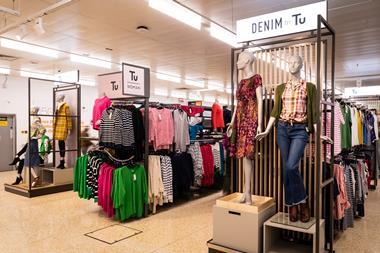Making the right technology decisions isn’t easy with the digital sphere continuously shifting, says Roy Reynolds, chief information officer at VCG.
Back in the day, retailing was pretty straightforward. You bought the products from wholesalers, gave them a hefty price mark-up, put them in the stores and sold them – simple.
That seems a world away now and, while many basic principles are unchanged, a whole raft of market dynamics are now in play and anyone thinking retailing is simple and unsophisticated really has no idea what’s going on.
“Anyone thinking retailing is simple and unsophisticated really has no idea what’s going on”
Human psychology, logistics and customer service remain fundamentally important, and they’re intrinsically linked to smart technologies, data mining and business intelligence to keep the proposition viable and appealing.
Successful retailers must have a clear online and offline proposition. They need to ensure the availability of key value items without the cost of a huge stockholding.
Should they run an everyday low price operation or have a high-low pricing strategy with smart and tempting offers?
All of this requires incredible organisation, insight and a slick supply chain. Market analysis, up-to-the-minute availability, efficient delivery, insight and competitor intelligence are all needed – along with the ability to take swift and decisive action.
If only technology wasn’t so important
A generation ago, it was difficult for new entrants to compete with the blue-chips and gain a foothold in certain sectors.
Retail technology was very expensive and the big boys were prepared to invest to keep a stranglehold on the market.
“Digital transformation is slowly eating away at legacy beliefs and on-premise infrastructures are now more of a liability than an asset”
Heritage, reputation and credibility were revered. ‘We’re reliable and trustworthy, and we offer great value’ was the message, so why would you go anywhere else?
In-house data centres and comms rooms are still cherished by the old guard who prefer a hands-on approach, but digital transformation is slowly eating away at legacy beliefs and on-premise infrastructures are now more of a liability than an asset.
The conundrum
So IT leaders are facing a number of decisions.
How do you transition from legacy technologies to new ways of working without massive disruption to business operations? And how do you future-proof investments by making the right decisions from the outset?
It goes without saying that cloud computing has changed the way we live our lives, both at home and at work.
Many Baby Boomers learned IT skills due to eBay, and Amazon is actively trying to eat everyone’s lunch while simultaneously providing public cloud services through its AWS division.
The solution
It’s been pointed out that ‘there’s no such thing as a cloud, just someone else’s computer’. And, just as we now lease cars rather than buying them outright or subscribe to Spotify rather than buying a CD, there’s no longer a need to capitalise, purchase and depreciate physical equipment any more – never mind all the hassle of managing it.
It’s surely a smarter move to let someone else take the hit and buy the hardware, then simply rent capacity from them.
You’ll always benefit from the latest state-of-the-art equipment and, with enhanced security levels and the right amount of direct access to your dedicated compute platform, you’ll have the best of both worlds.
Nobody wants to be left holding the baby when the world moves on to the next new trend and there’s no doubt we’ll continue to change the way we live and work as the digital paradigm evolves.
Making the right technology decisions to support business strategy isn’t easy.
There are so many options available and all organisations are somewhere on a journey from legacy on-premise equipment to private cloud services, hybrid environments and full cloud infrastructure.
The way in which people shop and therefore the way in which retailers do business is ever-evolving and only those able to move with pace and agility will succeed.
Click here to download our Retail Decision Maker’s Guide to ‘Enhancing in-store and online customer experience’.
And if you’d like to have a conversation with us about our work in the retail sector and how we could help you, please contact us at infor@vcg.group.

Roy Reynolds is chief information officer at VCG


























